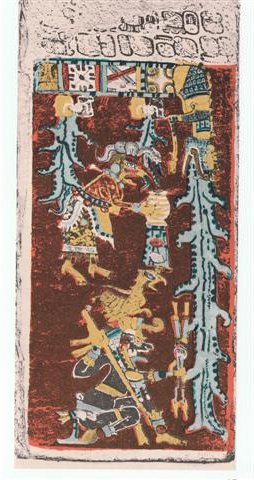The
C text has 6 'extra' glyphs both at the beginning of side a and
at the beginning of side b of the tablet,
|
Side a |
Side b |
|
1 |
6 |
386 |
6 |
342 |
|
393 |
348 |
this we can see this from the quite special design structure of Ca1-6
and Cb1-6:
 |
391 |
 |
|
Ca1-6 |
Cb1-6 (398) |
|
March 27 (86
= *6) |
(*398 = *366
+ *32) |
These 6 days (glyphs) possibly were intended to correspond to the 6
Roman 'interregnum nights' from Bissextum to the Kalends
of March:
|
Febr 1 -
Terminalia |
Bissextum - March 1 |
|
23 |
6 |
|
29 |
... The Mahabharata insists on
six as the number of the Pleiades as well as of the
mothers of Skanda and gives a very broad and wild
description of the birth and the installation of
Kartikeya 'by the assembled gods ... as their
generalissimo', which is shattering, somehow, driving home
how little one understands as yet. The least which can be
said, assuredly: Mars was 'installed' during a more or less
close conjunction of all planets; in Mbh. 9.45 (p. 133) it
is stressed that the powerful gods assembled 'all poured
water upon Skanda, even as the gods had poured water
on the head of Varuna, the lord of waters, for
investing him with dominion'. And this 'investiture' took
place at the beginning of the Krita Yuga, the
Golden Age ...
And then the missing first glyph in the C text (at Sirrah -
the Navel of the Horse - the topknot of
Andromeda) could be considered as equivalent to the 2nd Bissextum
day - to be added in leap years.
|
Febr 1 -
Terminalia |
Bissextum - March 1 |
|
23 |
7 |
|
30 |

Furthermore, number 6 was also used to indicate Tau-ono
(the 6 'stones') in the first day of the Pleiades.
... They all sat down and rested [on
the plain of Oromanga], when suddenly they saw
that a turtle had reached the shore and had crawled up
on the beach. He [Ira] looked at it and said,
'Hey, you! The turtle has come on land!' He said, 'Let's
go! Let's go back to the shore.' They all went to pick
up the turtle. Ira was the first one to try to
lift the turtle - but she didn't move. Then Raparenga
said, 'You do not have the necessary ability. Get out of
my way so that I can have a try!' Raparenga
stepped up and tried to lift the turtle - but
Raparenga could not move her. Now you spoke,
Kuukuu: 'You don't have the necessary ability, but I
shall move this turtle. Get out of my way!' Kuukuu
stepped up, picked up the turtle, using all his
strength. After he had lifted the turtle a little bit,
he pushed her up farther. No sooner had he pushed her up
and lifted her completely off the ground when she struck
Kuukuu with one fin. She struck downward and
broke Kuukuu's spine.The turtle got up, went back
into the (sea) water, and swam away. All the kinsmen
spoke to you (i.e. Kuukuu): 'Even you did not
prevail against the turtle!' They put the injured
Kuukuu on a stretcher and carried him inland. They
prepared a soft bed for him in the cave and let him rest
there. They stayed there,
rested, and lamented the severely injured Kuukuu.
Kuukuu said, 'Promise me, my friends, that you
will not abandon me!' They all replied, 'We could never
abandon you!' They stayed there twenty-seven [27] days
in Oromanga. Everytime Kuukuu asked,
'Where are you, friends?' they immediately replied in
one voice, 'Here we are!' They all sat down and thought.
They had an idea and Ira spoke, 'Hey, you! Bring
the round stones (from the shore) and pile them into six
heaps of stones!' One of the youths said to Ira,
'Why do we want heaps of stone?' Ira replied, 'So
that we can all ask the stones to do something.' They
took (the material) for the stone heaps (pipi horeko)
and piled up six heaps of stone at the outer edge of the
cave. Then they all said to the stone heaps, 'Whenever
he calls, whenever he calls for us, let your voices rush
(to him) instead of the six (of us) (i.e., the six stone
heaps are supposed to be substitutes for the youths).
They all drew back to profit (from the deception) (?
ki honui) and listened. A short while later,
Kuukuu called. As soon as he had asked, 'Where are
you?' the voices of the stone heaps replied, 'Here we
are!' All (the youths) said, 'Hey, you! That was well
done!' ... [E:27-30]

... The star cluster Krittika
... sometimes known as Kārtikā,
corresponds to the open star cluster Pleiades in Indian
astronomy and Jyotisa
(Hindu astrology). The name literally translates to 'the
cutters' ... In Hindu
mythology, the god Murugan (Skanda /
Subrahmanya / Kartikeya) was raised by the
six sisters known as the Krttikā and thus came to
be known as Kārtikeya (literally 'Him of the
Krttikā'). According to the Mahābhārata, Murugan
was born to Agni and Svāhā, after the
latter impersonated six of the seven wives of the
Saptarshi and made love to him. The Saptarshi,
hearing of this incident and doubting their wives'
chastity, divorced them. These wives then became
the Krttikā ...
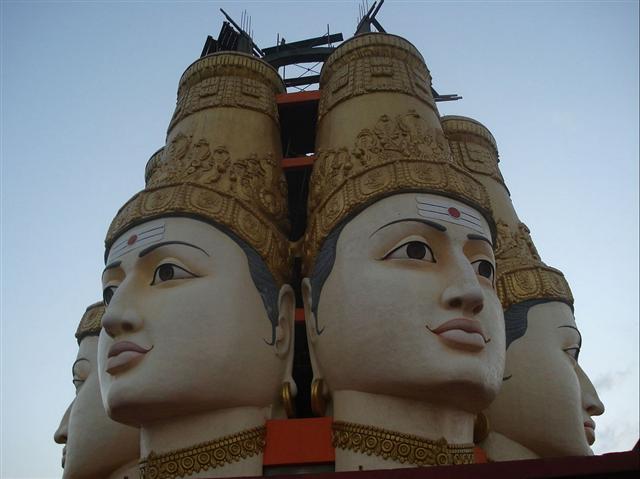
The origin of the idea of 6 stars in the Pleiades (the
nurses of Kārttikeya) might
have been the computation 366 = 6 * 60 + 6
→ 666 → the Number of the
Beast:
The tropical
year needed more than 365 days, viz. approximately 365¼
days, as in the circuit of Sirius,
... The Sothic cycle was based on
what is referred to in technical jargon as 'the periodic
return of the heliacal rising of Sirius', which is the
first appearance of this star after a seasonal absence,
rising at dawn just ahead of the sun in the eastern
portion of the sky. In the case of Sirius the interval
between one such rising and the next amounts to
exactly 365.25 days - a mathematically harmonious
figure, uncomplicated by further decimal points, which
is just twelve minutes longer than the duration of the
solar year ... In ancient Egypt they thought Sirius was
behind the yearly rise of the Nile ... the seasonal
cycle, throughout the ancient world, was the foremost
sign of rebirth following death, and in Egypt the
chronometer of this cycle was the annual flooding of the
Nile ...
and 6 * (60 + 1)
ought to be a good (maitaki) measure (i.e. leaping
over 1 day in 3 out of 4 years). Or, rather, it should be
a very good measure:
|
BOOTES: |
|
15 |
Svāti |
α
Bootis |
Shoot of plant, coral |
Oct 22 (295) |
|
very
good |
Arcturus |
 |
... Given our perception that there were 6 dark
(interregnum) nights from day 359 to the end of the
year,
|
April 25
(115) |
60 |
June
25 (176) |
121 |
Oct 25
(298) |
60 |
Dec 25 (359) |
6
+ 114 |
|
183 |
182 |
|
365 |
we could expect also the other cardinal points of
the Sun to follow suit, because we know that June 21
(Gregorian summer solstice) belongs together with
December 21 (Gregorian winter solstice) in the same
way as 'June 25 (the Julian summer solstice) paired
up with 'December 25 (the Julian winter solstice).
And the Pope had similarly changed also the Julian
date for spring equinx from day 84 to day 80.
But whereas December 25 + 6 = December 31 we can see
that June 25 + 6 = July 1. The solution to this
dilemma should be to let the new year begin with
December 31 (365 = 52 weeks + 1) instead of with
January 1.
|
April 25
(115) |
60 |
June
25 (176) |
5
+ 116 |
Oct 25
(298) |
60 |
Dec 25 (359) |
5
+ 116 |
|
61 |
2 * 61 |
61 |
2 * 61 |
|
183 |
183 |
|
366 = 2 *
183 = 6 * 61 |
However, the Gregorian calendar was beginning with
January 1 and this strange phenomenon ('a year and a
day') could have motivated 6 days at the beginning
of the C text - as well as at the beginning of its
side b. March 21 (80) + 6 = March 27 (86) ...
 |
391 |
 |
|
Ca1-6 |
Cb1-6 (398) |
|
March 27 (86
= *6) |
(*398 = *366
+ *32) |
Also; the distance from Canopus (*95) to Sirius
(*101) was 6 right ascension days and this may have
been decisive.
|
no glyph |
koia |
ki te
hoea |
ki te
henua |
te rima te
hau tea |
haga i te
mea ke |
ki te
henua - tagata honui |
|
Ko. 1. Article (ko
te); preposition: with (see grammar);
prefix of personal pronouns: koau, I;
kokoe, you (singular); koîa,
he, she, it; kokorua, you (plural);
ko tagi, koîa, he with his weeping.
2. Article which precedes proper nouns,
often also used with place names: Ko
Tori, Ko Hotu Matu'a, Ko Pú.
Koîa, exact:
tita'a koîa, exact demarcation. Seems to
be the personal pronoun koîa -
applied in the meaning of: thus it is, here
it is precisely. Vanaga. 1. Negative;
e ko, not, except; e ko ora,
incurable; ina ko, not; ina ko
tikea, unseen; ina e ko, not;
ina e ko mou, incessant. 2. A particle
used before nouns and pronouns; ko vau,
I; ko te, this; ko mea tera,
this; ati ko peka, to avenge, ko
mua, first, at first, formerly. 3.
There, yonder. P Mgv.: ko, over
there, yonder. Ta.: ó, there, here.
Churchill.
Hoe. Hoe 1. Paddle.
Mgv.: hoe, ohe, id. Mq., Ta.:
hoe, id. 2. To wheeze with fatigue (oeoe
2). Arero oeoe, to stammer, to
stutter; Mgv. oe, to make a whistling
sound in breathing; ohe, a cry from a
person out of breath. Mq.: oe, to
wheeze with fatigue. 3. Blade, knife; hoe
hakaiu, clasp-knife, jack-knife;
hoe hakanemu, clasp-knife; hoe
pikopiko, pruning knife. 4. Ta.:
oheohe, a plant. Ma.: kohekohe,
id. Churchill.T. Paddle. E hoe te heiva
= 'and to paddle (was their) pleasure'.
Henry. Hoea, instrument for
tattooing. Barthel.
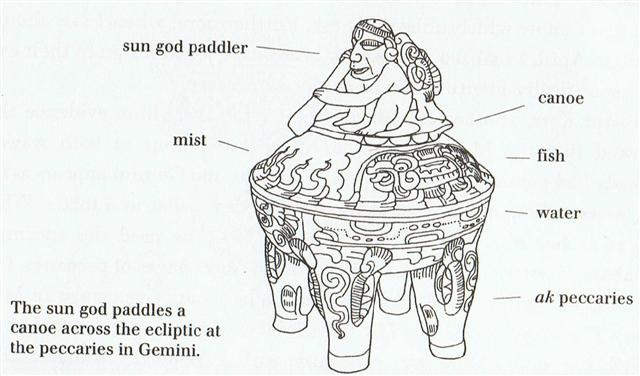 |
 |
 |
 |
 |
 |
 |
|
Ca1-1 |
Ca1-2 |
Ca1-3 |
Ca1-4 |
Ca1-5 |
Ca1-6 |
|
CLOSE TO THE SUN: |
|
Sept 20 (263) |
21 |
Equinox |
23 |
24 |
25 (84 + 184) |
26 |
|
ALCHITA
= α Corvi,
MA WEI (Tail of the Horse) =
δ Centauri
(183.1),
MINKAR = ε Corvi
(183.7), ρ Centauri (183.9) |
PÁLIDA (Pale) = δ Crucis
(184.6),
MEGREZ (Root of the Tail) = δ Ursae Majoris
(184.9) |
Hasta-13 (Hand) /
Chariot-28 (Worm)
GIENAH
(Wing) = γ Corvi
(185.1),
ε
Muscae (185.2),
ζ
Crucis (185.4),
ZANIAH
(Corner) = η Virginis
(185.9)
*144.0 = *185.4 - *41.4 |
CHANG SHA
(Long
Sand-bank) = ζ Corvi
(186.3) |
INTROMETIDA (Inserted) =
ε
Crucis
(187.4),
ACRUX =
α
Crucis
(187.5)
*146.0 = *187.4 - *41.4 |
γ
Com. Berenicis (188.0),
σ
Centauri (188.1),
ALGORAB = δ Corvi
(188.5),
GACRUX = γ Crucis
(188.7) |
γ
Muscae (189.0),
AVIS SATYRA (Bird of the Satyrs) = η Corvi
(189.3),
ASTERION (Starry) = β Canum Ven.
(189.5),
KRAZ = β Corvi,
κ Draconis (189.7) |

... Raven gazed up and down the beach. It
was pretty, but lifeless. There was no one
about to upset, or play tricks upon. Raven
sighed. He crossed his wings behind him and
strutted up and down the sand, his shiny
head cocked, his sharp eyes and ears alert
for any unusual sight or sound. The
mountains and the sea, the sky now ablaze
with the sun by day and the moon and stars
he had placed there, it was all pretty, but
lifeless. Finally Raven cried out to the
empty sky with a loud exasperated cry. And
before the echoes of his cry faded from the
shore, he heard a muffled squeak. He looked
up and down the beach for its source and saw
nothing. He strutted back and and forth,
once, twice, three times and still saw
nothing. Then he spied a flash of white in
the sand. There, half buried in the sand was
a giant clamshell. As his shadow fell upon
it, he heard another muffled squeak. Peering
down into the opening between the halves of
the shell, he saw it was full of tiny
creatures, cowering in fear at his shadow
... |
|
CLOSE TO
THE FULL MOON: |
|
March 21 (80)
Al Fargh al Thāni-25 (Rear Spout)
0h (365.25)
CAPH (Hand) = β Cassiopeiae,
SIRRAH (Navel of the Horse)
=
α
Andromedae
(0.5),
ε
Phoenicis,
γ³
Oct.
(0.8) |
22
Uttara Bhādrapadā-27 (2nd of the Blessed
Feet) /
Wall-14 (Porcupine)
ο Oct. (1.3),
ALGENIB PEGASI = γ
Pegasi
(1.8) |
23
χ Pegasi (2.1), θ Andromedae (2.7) |
24
σ Andromedae (3.0), ι Ceti (3.3), ζ Tucanae
(3.5), ρ Andromedae, π Tucanae (3.7) |
Julian equinox
no star listed (4) |
26 (80 +
5)
ANKAA
= α Phoenicis,
κ Phoenicis (5.0)
ALPHARD (α Hydrae)
|
27
λ Phoenicis (6.3), β Tucanae (6.4)
*6.4 - *41.4 + *366.0 = *331
=
*148.0 + 183.0 |
|
... Nut, whom the Greeks
sometimes identified with Rhea, was goddess
of the sky, but it was debatable if in
historical times she was the object of a
genuine cult. She was Geb's twin sister and,
it was said, married him secretly and
against the will of Ra. Angered, Ra had the
couple brutally separated by Shu and
afterwards decreed that Nut could not bear a
child in any given month of any year. Thoth,
Plutarch tells us, happily had pity on her.
Playing draughts with the Moon, he won in
the course of several games a seventy-second
part of the Moon's light with which he
composed five new days. As these five
intercalated days did not belong to the
official Egyptian calendar of three hundred
and sixty days, Nut was thus able to give
birth successively to five children: Osiris,
Haroeris (Horus), Set, Isis and Nepthys ... |
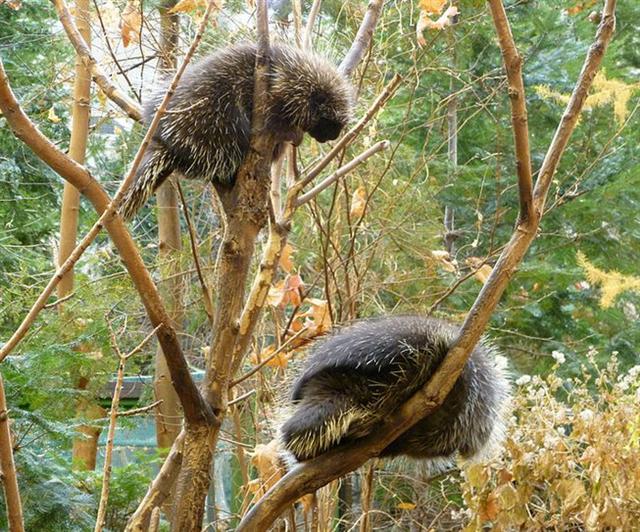
... The
players all played at once, without waiting
for turns, quarreling all the while, and
fighting for the hedge-hogs; and in a very
short time the Queen was in a furious
passion, and went stamping about, and
shouting 'Off with his head!' or 'Off with
her head!' about once in a minute. Alice
began to feel very uneasy: to be sure, she
had not as yet had any dispute with the
Queen, but she knew that it might happen any
minute, 'and then', thought she, 'what would
become of me?' They're dreadfully fond of
beheading
people here: the
great wonder is, that there's any one left
alive! ... |
| te rima |
E tupu |
ki roto |
o te hau
tea |
ki te
henua - te maro |
rutua - te pahu |
|
Rutu.
1. To read, to recite, to pronounce
words solemnly; he-rutu i te kohau motu,
to read the rongorongo tablets; hare
rutu rogorogo mo hakama'a ki te ga poki ite
kai, i te rogorogo, rongorongo school,
house in which children were taught reading
and writing the rongorongo signs. 2. To pelt
with stones. 3. To gather in great numbers
(of people). Vanaga. Sound.
Rutu-rongorongo = the sound of
recitation. Barthel. T. Beat. Henry. To
recite; tae rutu, irreverence.
Churchill. Pau.: rutu, a drum. Mgv.:
rutu, to beat, to cause to resound.
Ta.: rutu, a drum, to drum. Mq.:
utu, to drum. Sa.: lutu, to shake
a rattle. Churchill.
Pahu.
Drum. Pahu-rutu-roa =
Long-beating-drum. Barthel. M. Pahū.
Tree gong. Starzecka.
Pahu uma,
coffin; in modern usage, any sort of jar.
Pahupahu = To dig a hole. Vanaga. A
trough, barrel, cask, cradle, drum, chest,
box; pahu
nui, a kettle;
pahu oka,
a drawer;
pahu papaku, coffin;
pahu rikiriki,
sheath; pahu
viriviri, hogshead.
Pahupahu,
box. Churchill. A trough, barrel, cask,
cradle, drum, chest, box;
pahu nui,
a kettle;
pahu oka, a drawer;
pahu papaku,
coffin; pahu
rikiriki, sheath;
pahu
viriviri, hogshead;
pahupahu,
box. P Mgv., Ta.:
pahu,
a drum. Mq.:
pahu, a drum, a large
cylindrical container. (To.:
bahu,
a hollow tree set in water as a filter.)
Sa.: pusa,
a box. To.:
buha, id. Fu.:
pusa,
id. Niue:
puha, id. Pau.:
puha,
id. Pahuahi,
lantern, beacon.
Paukumi,
closet, cupboard.
Pahupopo,
a mould;
pahupopokai, cupboard for food.
Pahure:
1. To sweep everything away. 2. To wound, to
lacerate, scar, bruise, lesion, sore;
pahurehure,
to wound, to scratch;
hakapahure,
to wound. T Pau.:
pahure,
to be skinned;
pahore, to peel off, to scale.
Mgv.: pahore,
to cut off, to chop, to slice. Ta.:
pahore,
to flay, to skin. Churchill 2. |
 |
 |
 |
 |
 |
 |
|
*Ca14-29 (32 + 360) |
Cb1-1 (393) |
Cb1-2 |
Cb1-3 |
Cb1-4 (396) |
Cb1-5 |
|
CLOSE TO THE SUN: |
|
April 16 (471 = 364 + 107)
ANA-NIA-10 (Pillar-to-fish by)
χ
Ceti (26.1),
POLARIS =
α
Ursae Minoris,
BATEN KAITOS
(Belly of the Fish) =
ζ
Ceti
(26.6),
METALLAH (Triagle) = α Trianguli
(26.9) |
17 (91 + 16)
Al Sharatain-1 /
Ashvini-1 /
Bond-16 (Dog) /
Mahrū-sha-rishu-ku-1 (Front of the Head of
Ku)
SEGIN = ε Cassiopeia,
MESARTHIM = γ
Arietis,
ψ
Phoenicis (27.2),
SHERATAN
(Pair of Signs) =
β
Arietis,
φ
Phoenicis (27.4)
*351.0 = *27.4 - *41.4 |
18
ι Arietis (28.0), λ Arietis (28.2), υ Ceti
(28.8) |
19
ALRISHA (The Knot) = α
Piscium,
χ Phoenicis (29.2), ε Trianguli (29.4),
ALAMAK (Caracal) = γ Andromedae
(29.7)
*353.0 = *29.4 - *41.4 |
20
Arku-sha-rishu-ku-2 (Back of the Head of Ku)
2h (30.4)
κ
Arietis (30.3),
HAMAL
(Sheep) =
α
Arietis
(30.5)
ALKES (α
Crateris) |
21 (111)
DELTOTUM = β Trianguli
(31.2), ι Trianguli (31.7), η Arietis (31.9)
*355.0 = *31 - *41 |
|
20 (471 - 27 = 444) |
21 (80 = 107 - 27) |
22 |
23 (2 * 41) |
'March
24 |
Julian equinox |
|
CLOSE TO THE FULL MOON: |
|
no star listed (209) |
MUPHRID (Solitary Star) = η Bootis
(210.1), ζ Centauri (210.3) |
φ Centauri (211.0), υ¹ Centauri (211.1), υ²
Centauri (211.8), τ Virginis (211.9) |
AGENA (At the Knee) =
β
Centauri
(212.1),
θ
Apodis (212.5),
THUBAN
(Dragon) =
α
Draconis
(212.8) |
14h (213.1)
π
Hydrae,
χ
Centauri (213.0),
MENKENT (Shoulder of the Centaur) =
θ
Centauri
(213.1) |
Neck-2 (Dragon)
ASELLUS TERTIUS (3rd Ass Colt) =
κ
Bootis,
κ
Virginis, 14 Bootis
(214.8) |
|
rutua te maeva |
|
Maeva. T. 1.
Move. Rangi-maeva = Moving Sky
(name of a marae). 2. Greet, greeting.
Henry. |
 |
|
Cb1-6 (398) |
|
ξ¹ Ceti (32.1) |
|
Al Ghafr-13 (The Cover) /
Svāti-15 (Very Good) /
TAHUA-TAATA-METUA-TE-TUPU-MAVAE-6 (a
pillar to stand by)
15 Bootis
(215.2),
ARCTURUS
=
α
Bootis
(215.4),
ASELLUS SECUNDUS (2nd Ass Colt) =
ι
Bootis
(215.5),
SYRMA (Train of the Virgin's Robe) =
ι
Virginis,
λ
Bootis (215.6),
η
Apodis (215.8)
*174.0 = *215.4 - *41.4 |
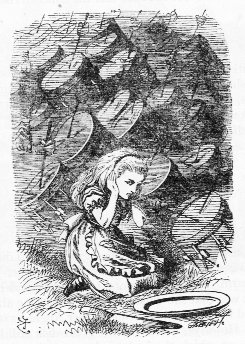
|






